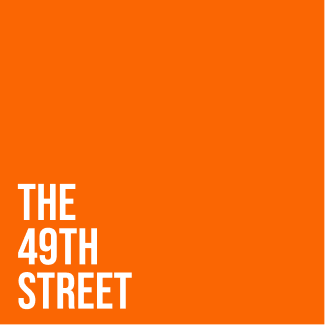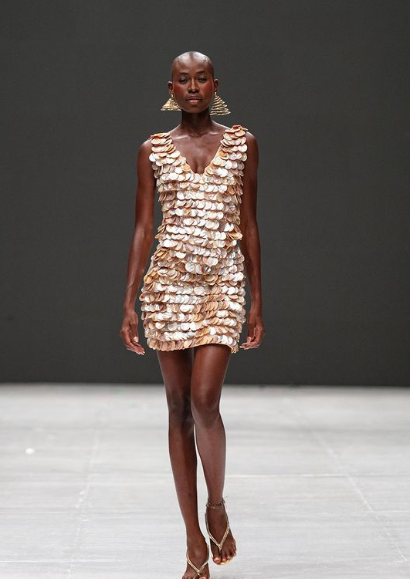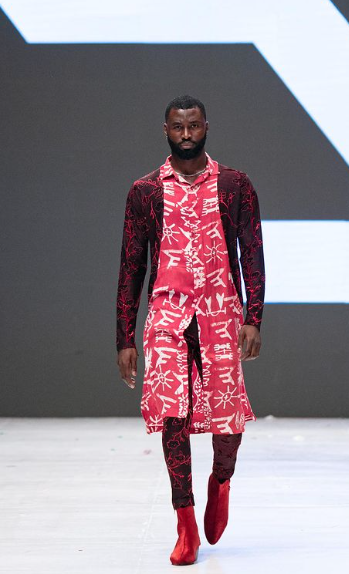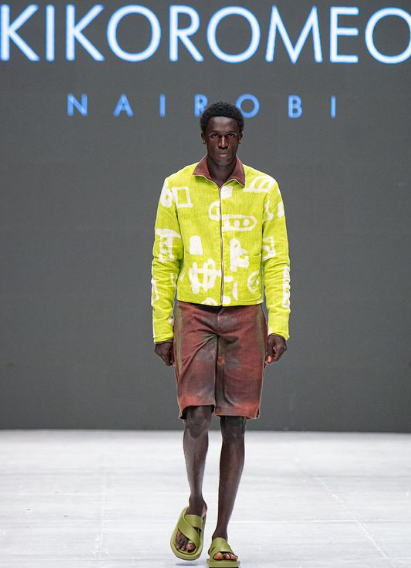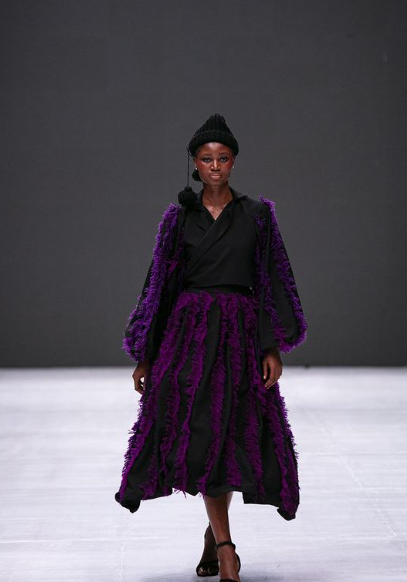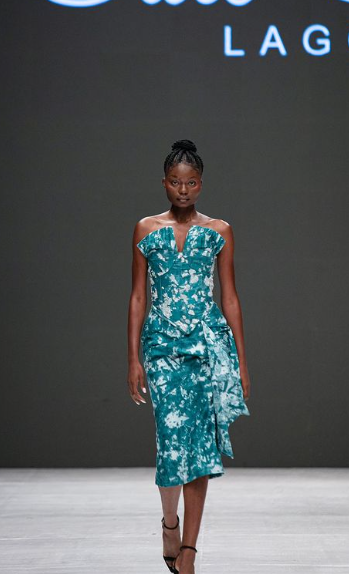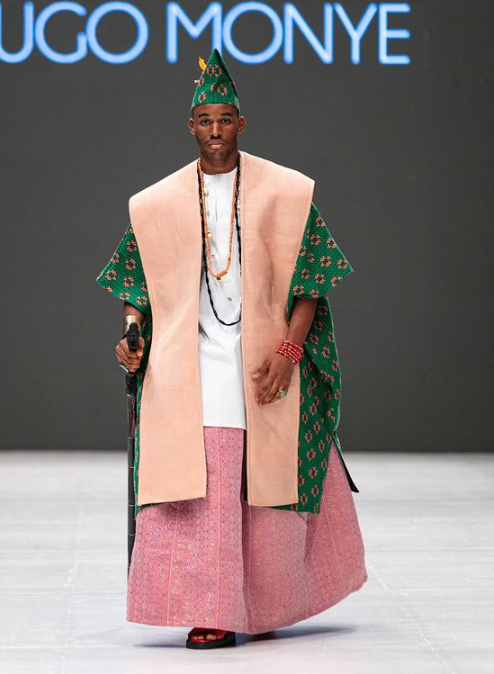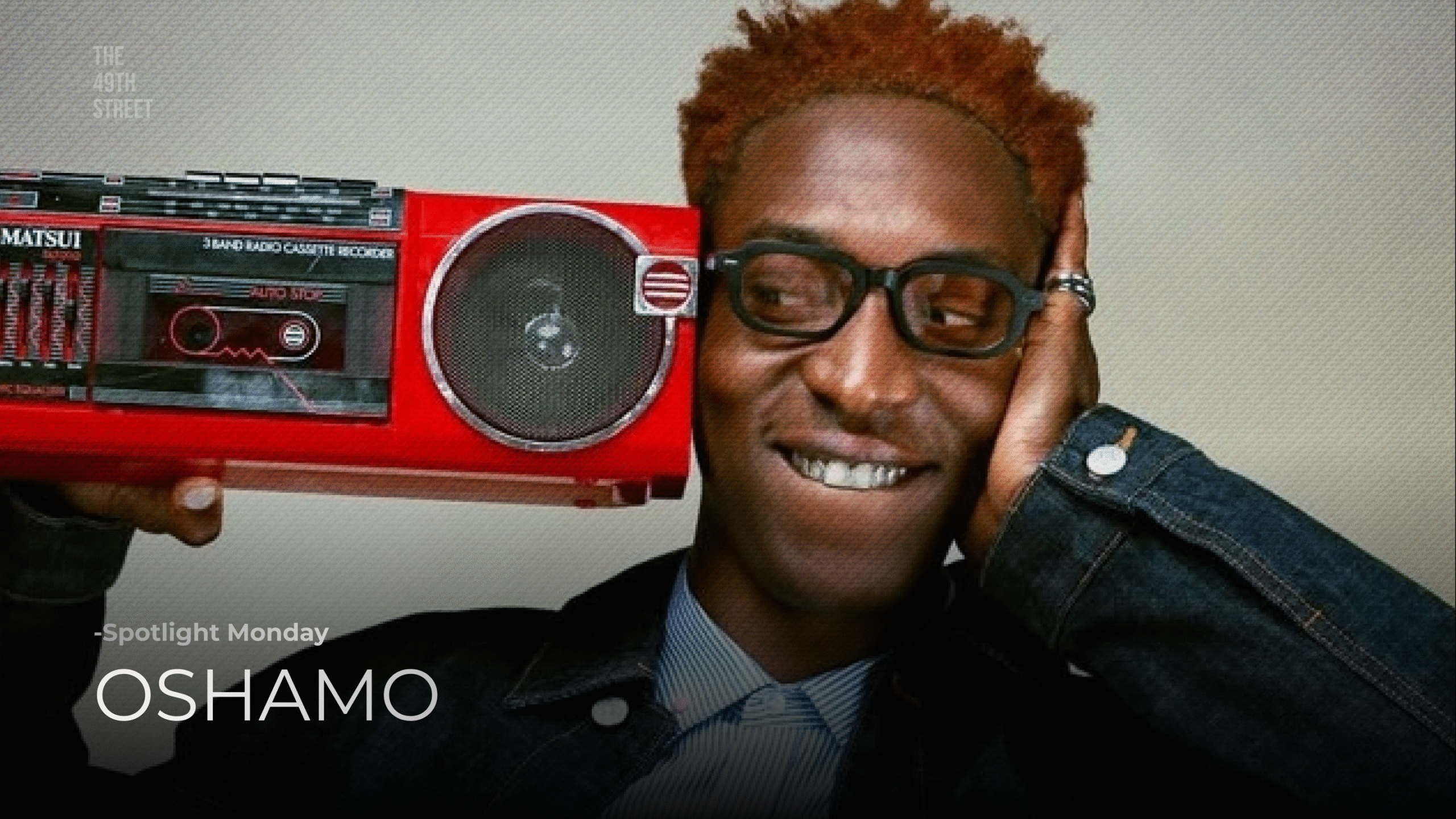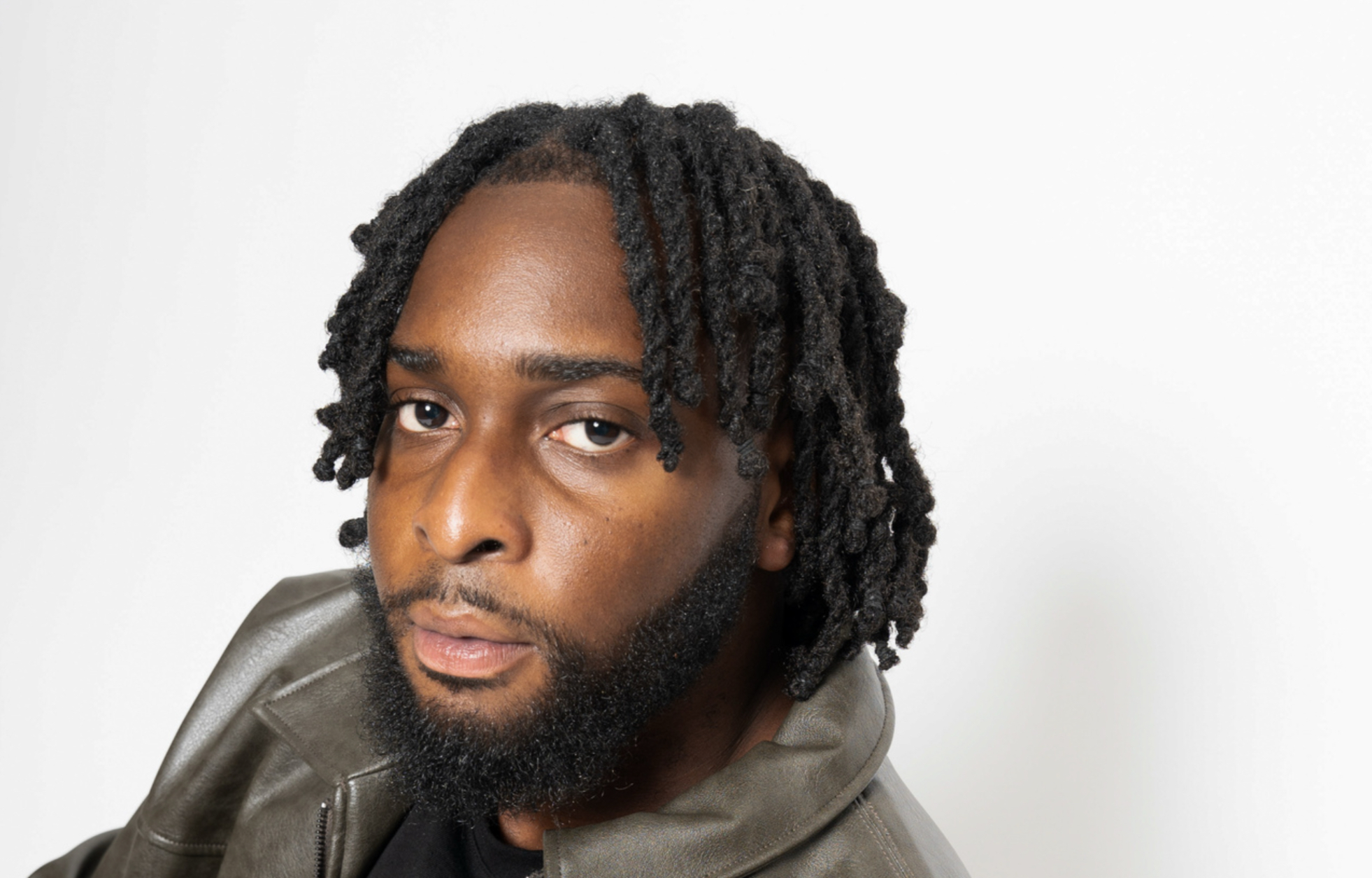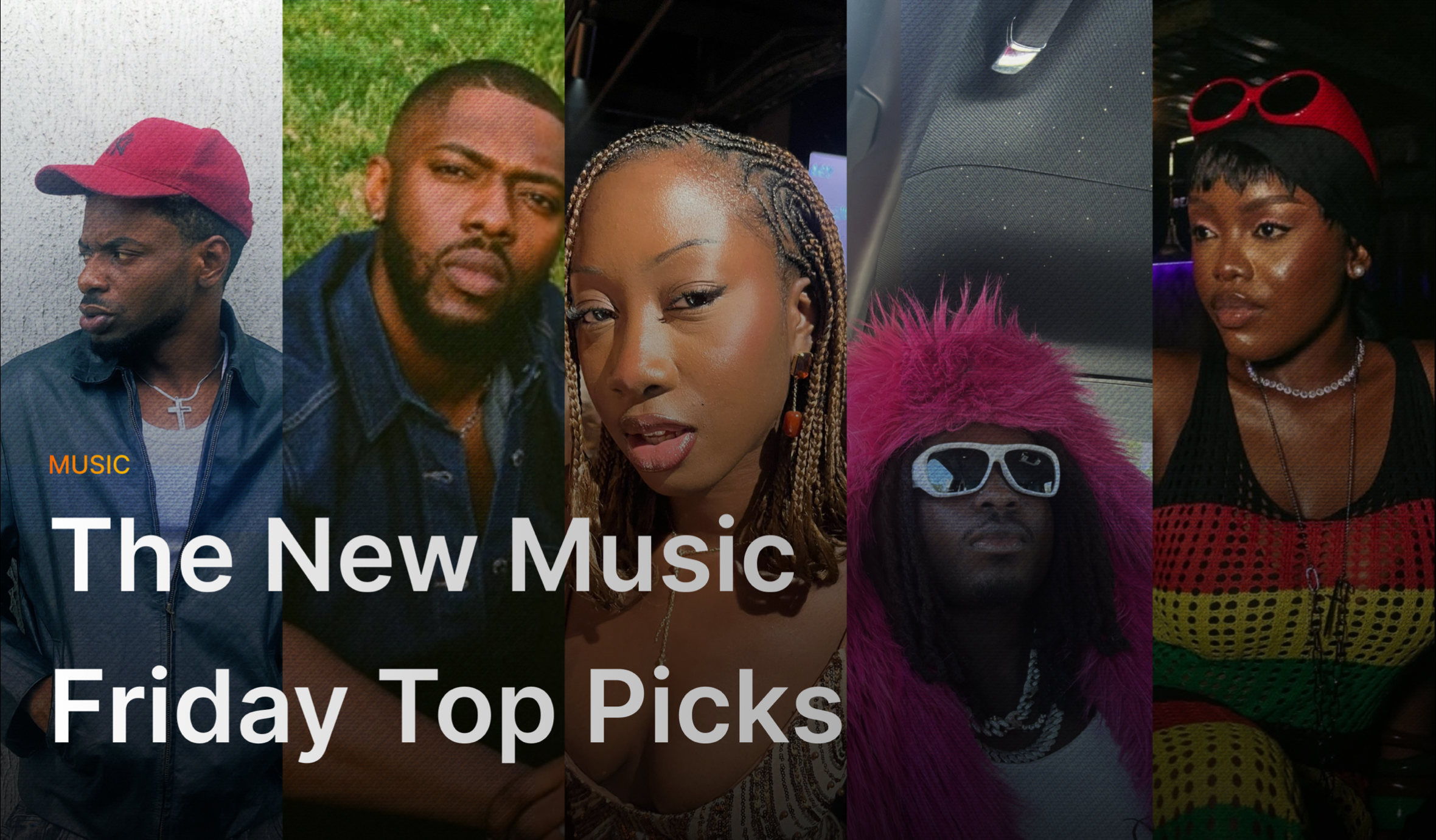By Chinazam Ikechi-Uko.
With a temperature averaging between 31°C and 33°C in the afternoon, October in Lagos has proven to be quite idyllic for foreigners. This gives it the perfect advantage to host an array of international events, and one of them was Lagos Fashion Week. The annual Lagos Fashion Week hosted by Heineken, Lush Hair and Techno was a big ball of talent. From the models strutting on the runway to the designers who used textiles and accessories to tell stories. These are the best parts of fashion, the stories behind every stitch a designer has a tale; they try to interpret their themes, it is their form of art, wearable art. However, though designers are the focal points of fashion week, they are not the only ones trying to tell a story.
The attendees of Lagos Fashion Week came from far and wide, they travelled the town and its several islands, and everybody was looking for something. Some of them want to make connections and grow in the industry, some of them want to learn and be inspired, some of them want to volunteer, and some are here for work. Though glamorous and glitzy, fashion week is a lot of work because every single moment in a fashion person’s year leads up to this moment.
For a designer, fashion week is the big break to showcase your designs to an international audience filled with buyers, writers and investors. For a model, this is an opportunity to meet so many fashion personalities and building a rapport with them can sustain the lifespan of the job. For a writer, it is a space to meet your next client. For a marketer, it is a symposium to show how good you are at your job.
There is a limited number of fashion weeks in a year, everyone is trying to make it count. So here are the moments that did leave a mark.
Tales From Maximalists:
In the realm of the arts, maximalism emerges as a response to minimalism, embodying an aesthetic characterised by abundance. The underlying philosophy can be succinctly expressed as “more is more,” in stark contrast to the minimalist principle of “less is more.”
Brands like Love From Julez, often referred to as LFJ, hold a prominent place among African celebrities. While this grants them extensive exposure, it leaves little margin for errors. Still, LFJ captivated the audience, establishing itself as a feminine maximalist brand with its collection titled “Under Sea,” cleverly referencing beloved sea creatures without seeming gimmicky.
Kadiju, known for its maximalist approach, provided a refreshing alternative in a world consumed by “quiet luxury.” Embraced by various art personalities like Davido, Ayra Starr, and Ashley Okoli, Kadiju is recognized for vibrant colors and extravagant ruffles created from layers of fabric. However, with its latest line titled “At One Moment, At The Next,” Kadiju demonstrated versatility beyond its signature style. While maintaining its bold aesthetic, Kadiju introduced fresh silhouettes, notably a striking blue and white checkered dress with a voluminous hem.
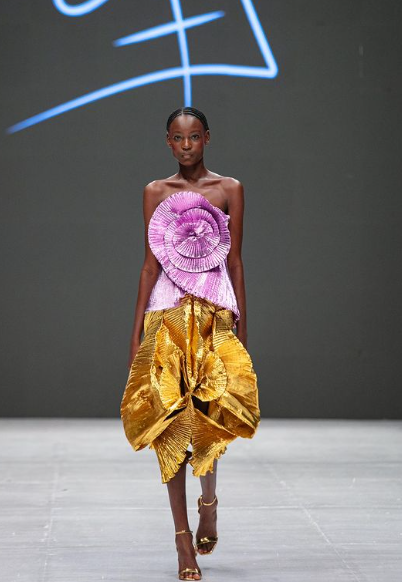
LFJ 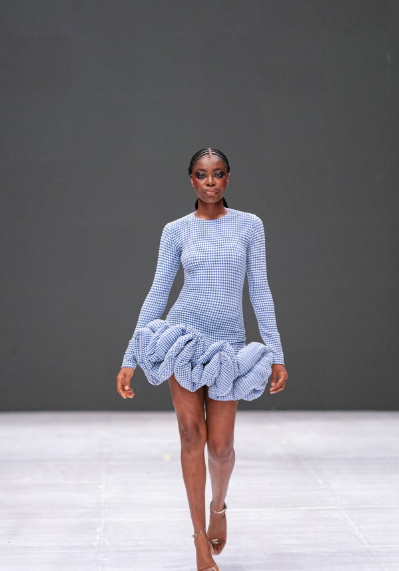
KADIJU
RENDOLL, a newcomer to the maximalist movement, made its runway debut at LFW. Despite being a relatively new womenswear label established in 2019 and facing pandemic challenges during its initial years, RENDOLL has managed to survive infancy. The collection highlighted the brand’s signature styles: feminine silhouettes and vibrant patterns, emphasizing self-expression and body positivity. RENDOLL is all about the girls, and it was founded by one.
Piilz n Poizn have built an audience off its heavy use of prints. The womenswear label aims to be unapologetically sexy and classic. The SS24 collection at LFW did not shy away from mixing prints. The collection was sexy and the dresses had interesting cutouts.
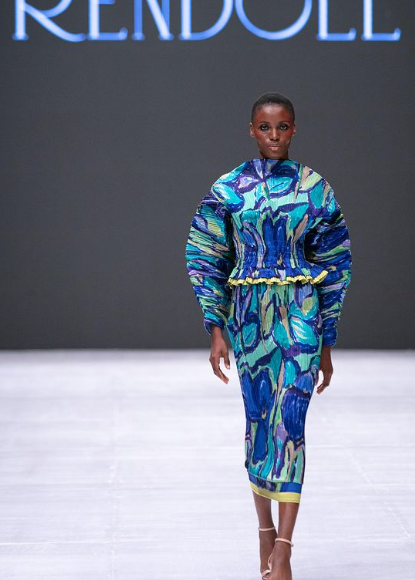
RENDOLL 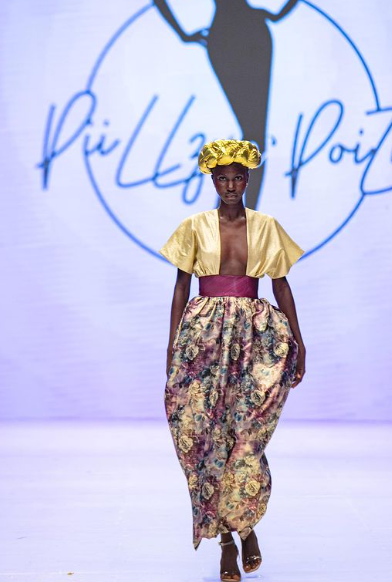
Piilz n Poizn
Abigail Ajobi showcased daring prints, tie-dye, and embellished denim pieces at the runway. The collection debuted with a strikingly low-cut dyed pants, setting the tone. Themed “Anti-Muse,” the collection reimagined streetwear, infusing it with playfulness and allure. Instead of traditional branding, batik replaced logos in a unique spin on logomania.
Meanwhile, Lul’la House presented “Threads of Continuity,” featuring bold silhouettes reminiscent of an hourglass. The collection showcased dresses with bell-shaped bottoms and captivating hand-beaded embellishments, aiming to explore a variety of fabrics, colors, and shapes.

Abigail Ajobi 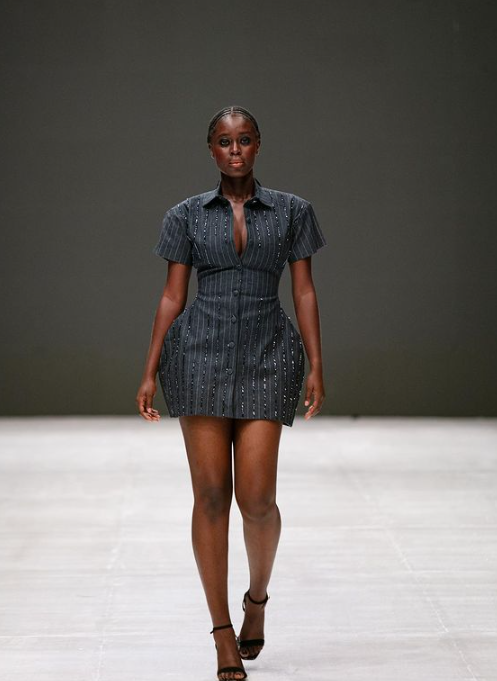
Lul’la House
A FASHION SONETTO:
Before the Italians created a strict fourteen-lined poem filled with a structured rhyme scheme, popularly known as a sonnet. There was a word for a short song- sonnetto. Sonnetto means a little song or sound and that is the best part of art. Its lack of rigidity, Lagos Fashion Week brought the stage but the designers took it to the next level. They added performances to the runway, why play background music when you could have an artiste sing a little song whilst serenading the models and viewers?
Music played a significant role in the ATAFO show, marking the kickoff of Lagos Fashion Week. Despite being an offsite event, ATAFO was committed to providing attendees with an immersive experience. Titled “Sartorial Reverie,” the show featured a choir performing a medley of the latest Afrobeats hits. However, the runway remained the focal point, led by fashion icon Ashley Okoli, who donned a white shirt paired with a mini office skirt and suspenders reminiscent of the 2010s trend. Apart from the suspenders, the show also introduced a unique bridal option: a blazer wedding dress.
Studio Imo made its LFW debut with a collection inspired by the themes of tradition, technology, and societal changes explored in Ken Liu’s “Good Hunting.” The collection featured ombre patterns and motifs, and the runway was opened by singer-songwriter DWIN THE STOIC, who performed in a custom Studio Imo piece. Studio Imo is a leading knitwear brand in the country, worn by celebrities like Ayra Starr and Korty EO.
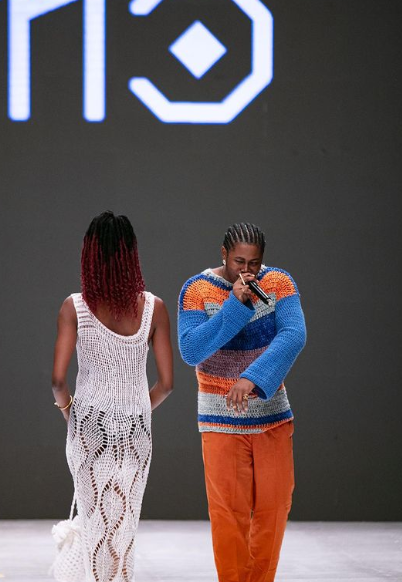
DWIN, THE STOIC 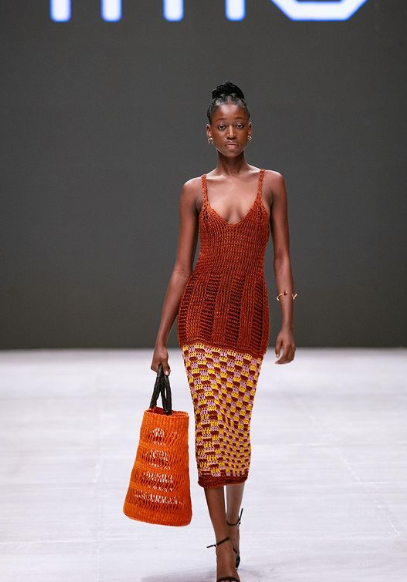
STUDIO IMO
FOLKLORE:
In most cultures, storytelling has been used as a form of education of one’s culture. On the LFW stage, a few designers took to textiles to tell stories of their homeland.
OSHOBOR has earned the moniker The Masquerade Designer for its use of Masquerade carvings. The collection called A Graduation of Love remains true to the brand’s heritage, drawing inspiration from the founder’s home state of Edo.
CUTE SAINT is another brand dedicated to using fabrics inspired by its roots. Cute Saint’s SS24 collection “IGBOYA” captures the resilient African spirit through a captivating fusion of metallics and knitted fabrics in a monochromatic palette of blacks, whites, and greys.
AJABENG took the audience out of the Nigerian culture and into Ghana. Ajabeng’s collection, “Pride of GHANA,” celebrates the soulful Highlife music that resonates throughout Ghana. It aims to revive untouched aspects of Ghanaian culture, offering elevated minimalist pieces in soft hues.
UGO MONYE was a fan favourite of the event, resulting in a standing ovation. Ugo Monye has established itself as a proudly African brand and its latest collection was no different. Ugo Monye showcased a collection that intricately intertwines elements of African royalty, skillfully blending art and culture to craft a compelling narrative.
Then, we journeyed to Nairobi, Kenya, where KIKOROMEO Nairobi unveiled their collection at LFW, drawing inspiration from the city itself. The “Ewala” collection showcased handwoven textiles and contemporary Swahili patterns in vibrant colors.
Kiléntàr’s latest collection took a folkloric approach, capturing the fluidity of water in ethereal shapes of white and blue. Inspired by “Mami Watta” and modern art, “Out Of This World” celebrates water’s cultural impact with metallic accents, coral, and seashells.
EMMY KASBIT explored the lives of Ekpe secret society men, spotlighting the prestigious Ukara cloth representing wealth and power. The collection merges this symbol with the new Emmy Kasbit Icon and incorporates the brand’s signature Akwete textile, crafted by skilled female artisans, emphasizing a commitment to tradition.
LOVE LETTERS TO LAGOS:
Lagos is not only my home but a city filled with endless marvels. Its vibrant social scene encompasses sports centres, theatres, dance floors, art galleries, nightclubs, and a myriad of other enticing attractions. Or at least that is what I say to make the city sound alluring to my foreign lovers. My love for Lagos and its social scene is a popular feeling for most Lagosians and these designers took to the sewing machine to interpret what they see when they think of their favourite city.
ORIRE’s collection, “Welcome Home,” embodies the vibrant essence of the city. It expertly merges silk, taffeta, denim, cotton, and plissé to create a rich tapestry of textures. Featuring bold ruffles, sleek siren dresses, vivid hues, and striking silhouettes, the designs mirror Orire’s commitment to contemporary femininity.
GETO, a favourite brand of Tems with her Damages video practically being a catalogue for the brand, showcased their “ILoVEHOME” collection, paying homage to Lagos. This modern reinterpretation of the city encompasses high platforms, short skirts, intricate shapes, swimwear, sultry cut-outs, and vibrant colours, reflecting the spirit of Lagos.
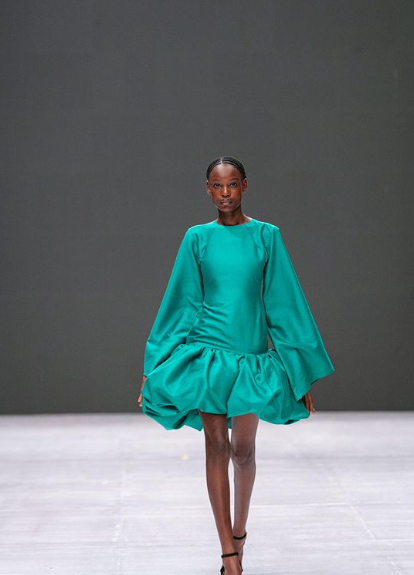
ORIRE 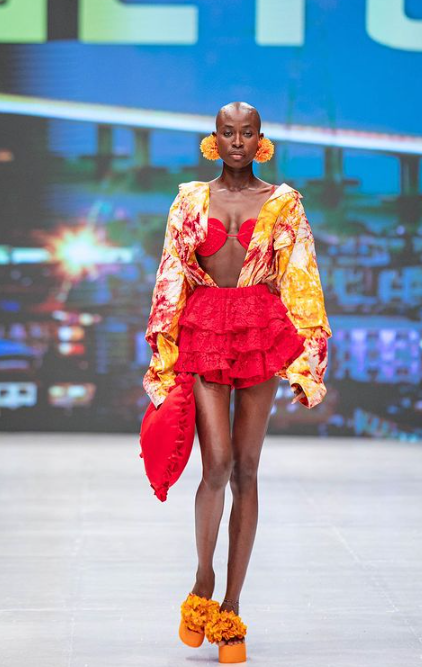
GETO
A THESIS ON HOW FABRIC IS A SOCIAL CONSTRUCT:
What’s on the runway? It’s a garment, it is a textile, no, it is hair. As a sponsor of LFW, LUSH HAIR is given the opportunity to have a runway show and as usual, LUSH HAIR explores the several ways hair can be used in garment production. The show was closed by Nollywood royal, Shaffy Bello.
Éki Kéré is a brand whose garments hold a solid argument on what is and is not a viable textile. With its signatory uses of raffia in garment production, Éki Kéré has stood its ground and this collection was another chapter in its defence.
NKWO remains dedicated to these principles in its most recent collection. NKWO is celebrated for its eco-friendly initiatives that focus on minimizing textile waste, protecting the environment, and upholding traditional craft techniques. Every piece of the collection was made from textile waste materials.
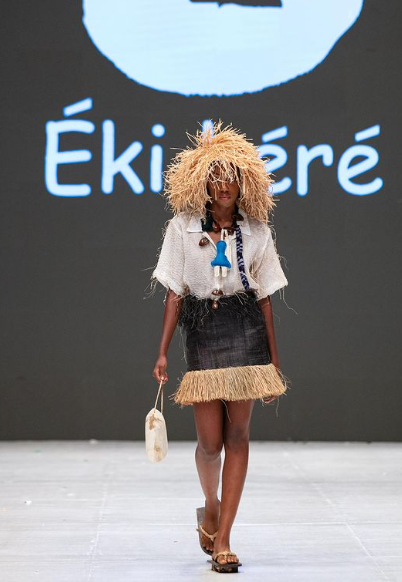
Éki Kéré 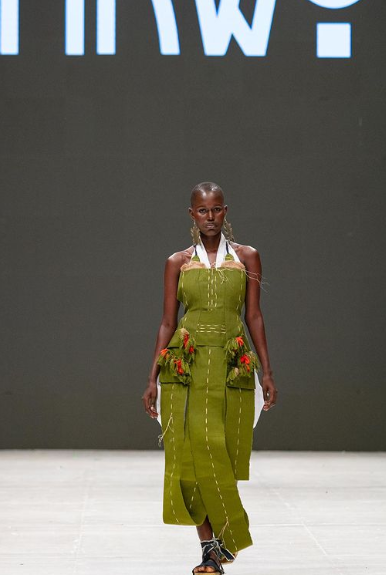
NKWO
VICTORY SOLOS:
A few years ago, Lagos Fashion Week created an initiative called the Green Access programme. This initiative is a platform for emerging designers to get their footing in the industry. The programme’s finalists get an opportunity to showcase their collection on the LFW runway and a year of mentorship. This year’s finalists were By Wuzzy, Ajanee, Bornstar, Dust of the Earth and Eso by Liman.
WORDS FROM A COUTURIER:
Couture is the most respected aspect of the fashion industry; it is seen as the crème de la crème, and an African couturier brought the house down.
Weiz Dhurm Franklyn unveiled a collection inspired by biblical stories and mythology. From golden apples to biblical descriptions of angels, the source material was vast and the result? Spectacular, with the jaw-dropping reveal of a dress covered in eyeballs as a reference to biblical angels. The collection featured a mixture of metallic accents, beaded structures and painted garments.
THE TITULAR TALE:
Now for the tale, everyone came here for, the tale of high society on the runway. The runway has been a playground of the upper echelon for years. It is not uncommon to see a monarch at a fashion show; after all, someone makes their clothes- why not get the best the country has to offer? Our favourite fashion brands are everywhere, the attires of the national air carriers’ hostesses, football jerseys (think Mowalola teaming up with Nike to create Nigeria’s 2018 World Cup kit), and on your politicians.
In recent years, the Lagos politicians have grown to appreciate the fashion industry with the previous governor creating art initiatives which included fashion shows. This year, the present Governor, Mr Babajide Sanwo-Olu, took it to the next level and strutted down the runway during the curtain call of the EMMY KASBIT show.
His excellency waved and smiled at the crowd as he officially closed the fashion week. This tale ends here, but for what it’s worth, it birthed a spin-off on Twitter.
